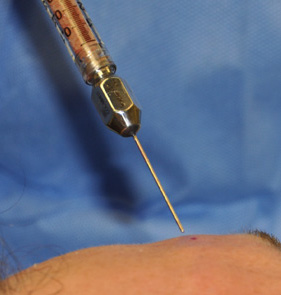The use of the words ‘stem cell’ and ‘reconstructive surgery’ is a charismatic combination that brings to mind a simple and seemingly obvious biologic solution. With the knowledge that fat cells are an excellent source of adult stem cells and liposuction is an easy way to get them, the procedure of lipofilling or fat-stem cell injections is irresistible. This has prompteda wide range of purported stem cell procedures in plastic surgery from breast reconstruction to facelifts. The unfiltered dumping of promotional ‘stem cell’ procedures on the internet has understandably galvanized the public, sometimes traveling afar to get these procedures.
But despite the simplicity of reprocessing fat from one body location to another, the science offat grafting and the stem cells that it carries is extremely complex and very poorly understood. While stem cells in the laboratory in a petri dish can be reliably studied and quantified, what happens in human tissues is still largely unknown. I suspect the science of stem cell transplantation will one day be the equivalent of a complex chess game compared to the simple ‘checkers’ of the blood coagulation cascade.

With successful fat injection grafting, is it the fat cells which survive, the conversion of the adult stem cells, or some combination of both? Almost assuredly it is some combination of both but the why and how is unclear. One factor that appears to be critically important is the site of injection and the extracellular matrix (ECM) into which it is placed. The ECM of the donor site has been shown to have a very strong influence on the ultimate cellular behavior of the injected cells. In cosmetic applications, the ECM of the donor sites are almost always normal.
But what of that of damaged tissues where the ECM is clearly altered or abnormal? The irradiated breast lumpectomy site is a prime example. The collagen and the blood vessels in the tissues are scarred and less prone to normal healing. Yet anectodal reports and a few reported clinical series show an improved tissue quality and some volume retention even in the face of an abnormal ECM.
Fat grafting and the stem cells it may contain is going to continue to find expanded clinical uses. The appeal of an autogenous or natural solution to both cosmetic and reconstructive tissue problems is just too great. The axiom of ‘Body…Heal Thyself’ just seems like it should work, whether one views that from a biologic or religious perspective. My hope is that the fat/stem cell therapies today do not become the failed hype of the growth factor science from twenty years ago where much scientific effort has resulted in just a few scant healing products.
From a patient’s perspective, it is important to realize that fat grafting by injection today may contain stem cells, but it is not a true stem cell treatment…at least not just yet. Their presence in the injected fat is an ‘incidental’ by product of the process. What they do and whether they are of benefit may be good medicine by default. When touted as a ‘stem cell therapy’ however is purely promotional and is bad medicine by intent.
Dr. Barry Eppley
Indianapolis, Indiana


